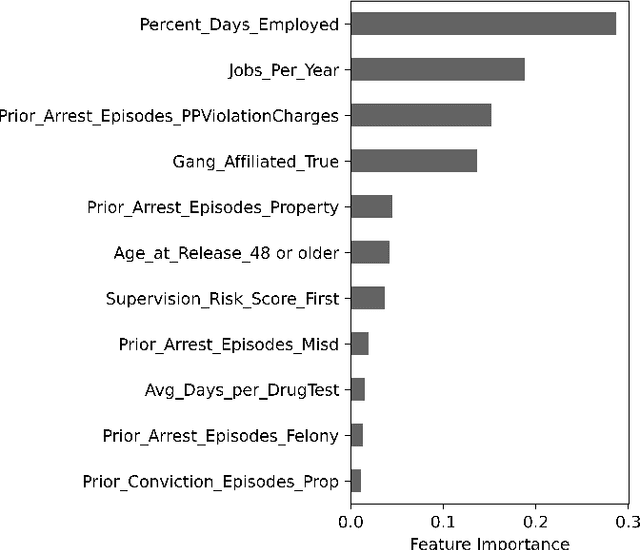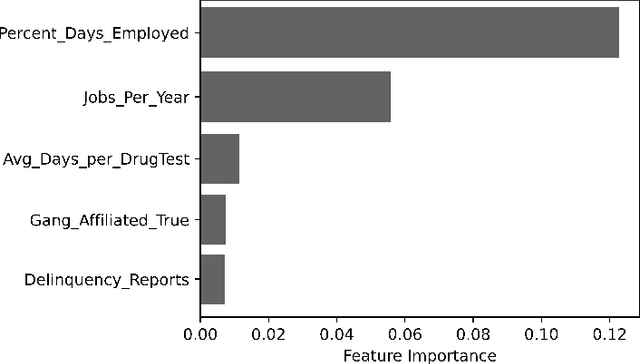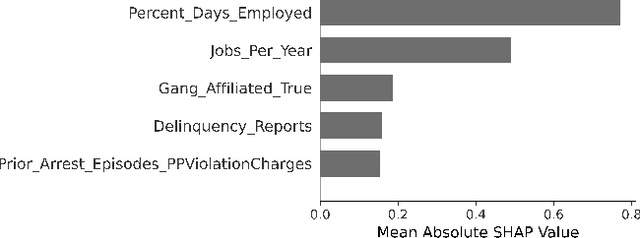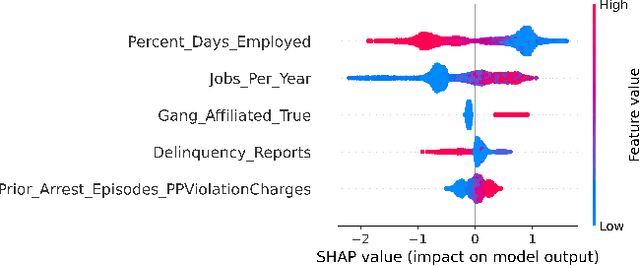Accuracy, Fairness, and Interpretability of Machine Learning Criminal Recidivism Models
Paper and Code
Sep 14, 2022



Criminal recidivism models are tools that have gained widespread adoption by parole boards across the United States to assist with parole decisions. These models take in large amounts of data about an individual and then predict whether an individual would commit a crime if released on parole. Although such models are not the only or primary factor in making the final parole decision, questions have been raised about their accuracy, fairness, and interpretability. In this paper, various machine learning-based criminal recidivism models are created based on a real-world parole decision dataset from the state of Georgia in the United States. The recidivism models are comparatively evaluated for their accuracy, fairness, and interpretability. It is found that there are noted differences and trade-offs between accuracy, fairness, and being inherently interpretable. Therefore, choosing the best model depends on the desired balance between accuracy, fairness, and interpretability, as no model is perfect or consistently the best across different criteria.
 Add to Chrome
Add to Chrome Add to Firefox
Add to Firefox Add to Edge
Add to Edge